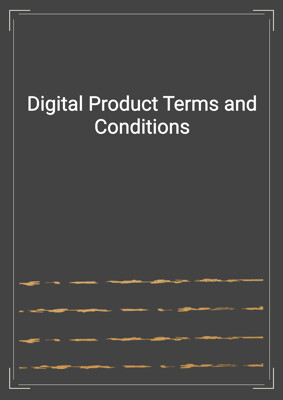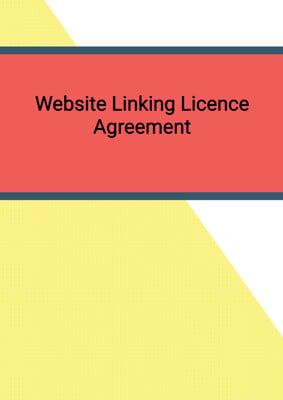How to Tailor the Document for Your Need?
01
Create Document
Fill in the details of the parties. You can click the "Fill with Member’s Information" button to complete it with information saved to your account.
02
Fill Information
Please fill in any additional information by following the step-by-step guide on the left hand side of the preview document and click the "Next" button.
03
Get Document
When you are done, click the "Get Document" button and you can download the document in Word or PDF format.
04
Review Document
Please get all parties to review the document carefully and make any final modifications to ensure that the details are correct before signing the document.
Document Preview
Document Description
The Website Advertising Agreement is a document that outlines the terms and conditions for advertising on a website. It is important because it establishes the agreement between the advertiser and the customer, ensuring that both parties are aware of their rights and responsibilities.
The entire document is divided into several sections, each addressing a specific aspect of the agreement.
Section 1, titled 'Interpretation', provides definitions for key terms used throughout the agreement. This ensures that both parties have a clear understanding of the terms being used.
Section 2, titled 'Advertising Scope & Services', outlines the scope of the advertising services to be provided by the advertiser. It specifies that the advertiser will publish the advertisements listed in Schedule A on their website for a specified period of time and based on the payment terms stated in the agreement.
Section 3, titled 'Customer Responsibilities', outlines the responsibilities of the customer in relation to providing the content for the advertisements. It specifies that the customer must send all materials and content for the advertisements to the advertiser by a specified deadline. Failure to do so may result in a delay to the start date of the advertisement.
Section 4, titled 'Modification and Cancellation', addresses the process for requesting modifications to the content of the advertisements or canceling the publication of an advertisement. It specifies that any cancellation request must be made before the advertiser begins any work on the advertisement.
Section 5, titled 'Payment Terms', outlines the payment terms for the advertising services. It specifies the amount of the fee to be paid by the customer and the schedule for invoicing and payment. It also states that if any fees remain unpaid past their due date, the advertiser may suspend any advertisements published on the website without any refund to the customer.
Section 6, titled 'Insurance', requires the customer to maintain certain insurance coverage.
Section 7, titled 'Warranties and Indemnities', outlines the obligations of both parties in relation to notifying each other of any circumstances or complaints that may affect the performance of the agreement. It also specifies that the customer is responsible for notifying the advertiser of any defects in their performance and that the advertiser will make reasonable efforts to rectify any such defects.
Section 8, titled 'Term and Termination', specifies the duration of the agreement and the circumstances under which either party may terminate the agreement. It also outlines the consequences of termination, including the customer's liability for any outstanding balances.
Section 9, titled 'Indemnity', requires the customer to indemnify the advertiser for any losses or claims that may arise from the customer's actions or breaches of the agreement.
Section 10, titled 'Limitation of Liability', limits the liability of both parties under the agreement, excluding certain types of damages.
Section 11, titled 'Intellectual Property', addresses the intellectual property rights of the customer and grants the advertiser a limited license to use the content for the advertisements.
Section 12, titled 'Confidential Information', requires both parties to keep the terms of the agreement and any confidential information disclosed during the course of the agreement confidential.
Section 13, titled 'Announcements / Publicity', restricts the parties from making any announcements or disclosures about the agreement without the prior written approval of the other party.
Section 14, titled 'Amendment', specifies that any variations to the agreement must be in writing and signed by both parties.
Section 15, titled 'Assignment', prohibits either party from assigning the agreement without the prior written consent of the other party.
Section 16, titled 'Entire Agreement', states that the agreement constitutes the entire agreement between the parties and supersedes any prior agreements or understandings.
Section 17, titled 'Severability', provides that if any provision of the agreement is held to be illegal, void, or unenforceable, it shall be deemed not to be included in the agreement, but the remaining provisions shall remain in full force and effect.
Section 18, titled 'Further Assurance', requires both parties to perform any further acts or execute any further documents necessary to implement the agreement.
Section 19, titled 'Warranty of Capacity and Power', includes representations and warranties by both parties that they have the authority and capacity to enter into and perform their obligations under the agreement.
Section 20, titled 'Force Majeure', provides that neither party shall be liable for any failure or delay in performing their obligations under the agreement if it is due to a cause outside their reasonable control.
Section 21, titled 'No Rights under Contracts for Third Parties', clarifies that third parties do not have the right to enforce any of the terms of the agreement.
Section 22, titled 'Arbitration and Proper Law', encourages the parties to resolve any disputes amicably and in good faith.
Section 23, titled 'Notices and Service', specifies the methods and addresses for serving notices under the agreement.
Section 24, titled 'Counterparts', allows the agreement to be executed in multiple counterparts, with each counterpart being considered an original.
How to use this document?
1. Provide information: Enter the advertiser's and customer's information in the agreement, including their principal place of business. This ensures that both parties are clearly identified.
2. Specify the advertising scope and services: List the advertisements to be published on the website, including their descriptions and the period of publication. This ensures that both parties are aware of the scope of the advertising services.
3. Outline customer responsibilities: Specify that the customer is responsible for providing the content for the advertisements and set a deadline for submission. Emphasize that failure to meet the deadline may result in a delay to the start date of the advertisement.
4. Address modification and cancellation: Explain the process for requesting modifications to the content or canceling the publication of an advertisement. Clarify that cancellation requests must be made before any work has begun on the advertisement.
5. Establish payment terms: State the amount of the fee to be paid by the customer and the schedule for invoicing and payment. Highlight that unpaid fees may result in the suspension of published advertisements.
6. Discuss insurance requirements: Specify the insurance coverage that the customer is required to maintain. This ensures that both parties are protected in case of any incidents.
7. Address warranties and indemnities: Outline the obligations of both parties in relation to notifying each other of any circumstances or complaints that may affect the performance of the agreement. Emphasize the customer's responsibility to report any defects in the advertiser's performance.
8. Specify the term and termination: Define the duration of the agreement and the circumstances under which either party may terminate. Explain the consequences of termination, including the customer's liability for outstanding balances.
9. Discuss indemnity: Clarify that the customer is responsible for indemnifying the advertiser for any losses or claims arising from their actions or breaches of the agreement.
10. Limit liability: State that both parties' liability under the agreement is limited, excluding certain types of damages.
11. Address intellectual property: Explain the customer's representation and guarantee that they own the intellectual property rights to the content. Grant the advertiser a limited license to use the content for the advertisements.
12. Maintain confidentiality: Emphasize the importance of keeping the terms of the agreement and any confidential information confidential.
13. Restrict announcements and publicity: Prohibit the parties from making any announcements or disclosures about the agreement without prior written approval.
14. Allow for amendment: Specify that any variations to the agreement must be in writing and signed by both parties.
15. Prohibit assignment: State that neither party can assign the agreement without the other party's written consent.
16. Clarify entire agreement: Confirm that the agreement constitutes the entire agreement between the parties and supersedes any prior agreements or understandings.
17. Address severability: Explain that if any provision of the agreement is deemed illegal, void, or unenforceable, it shall be excluded, but the remaining provisions shall remain in effect.
18. Ensure further assurance: Require both parties to perform any further acts or execute any further documents necessary to implement the agreement.
19. Provide warranty of capacity and power: Include representations and warranties by both parties that they have the authority and capacity to enter into and perform their obligations under the agreement.
20. Address force majeure: Clarify that neither party shall be liable for any failure or delay in performing their obligations due to causes outside their control.
21. Clarify rights of third parties: State that third parties do not have the right to enforce any terms of the agreement.
22. Encourage amicable resolution: Urge the parties to resolve any disputes amicably and in good faith.
23. Specify notice and service: Explain the methods and addresses for serving notices under the agreement.
24. Allow for counterparts: State that the agreement may be executed in multiple counterparts, with each counterpart considered an original.
Not the right document?
Don’t worry, we have thousands of documents for you to choose from:


































